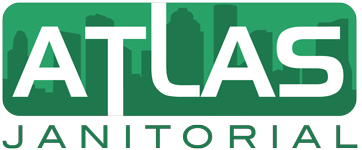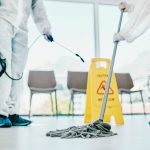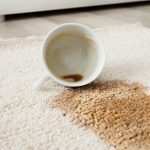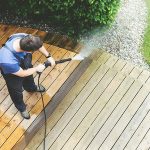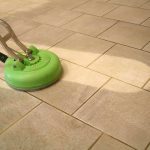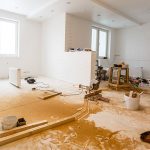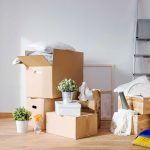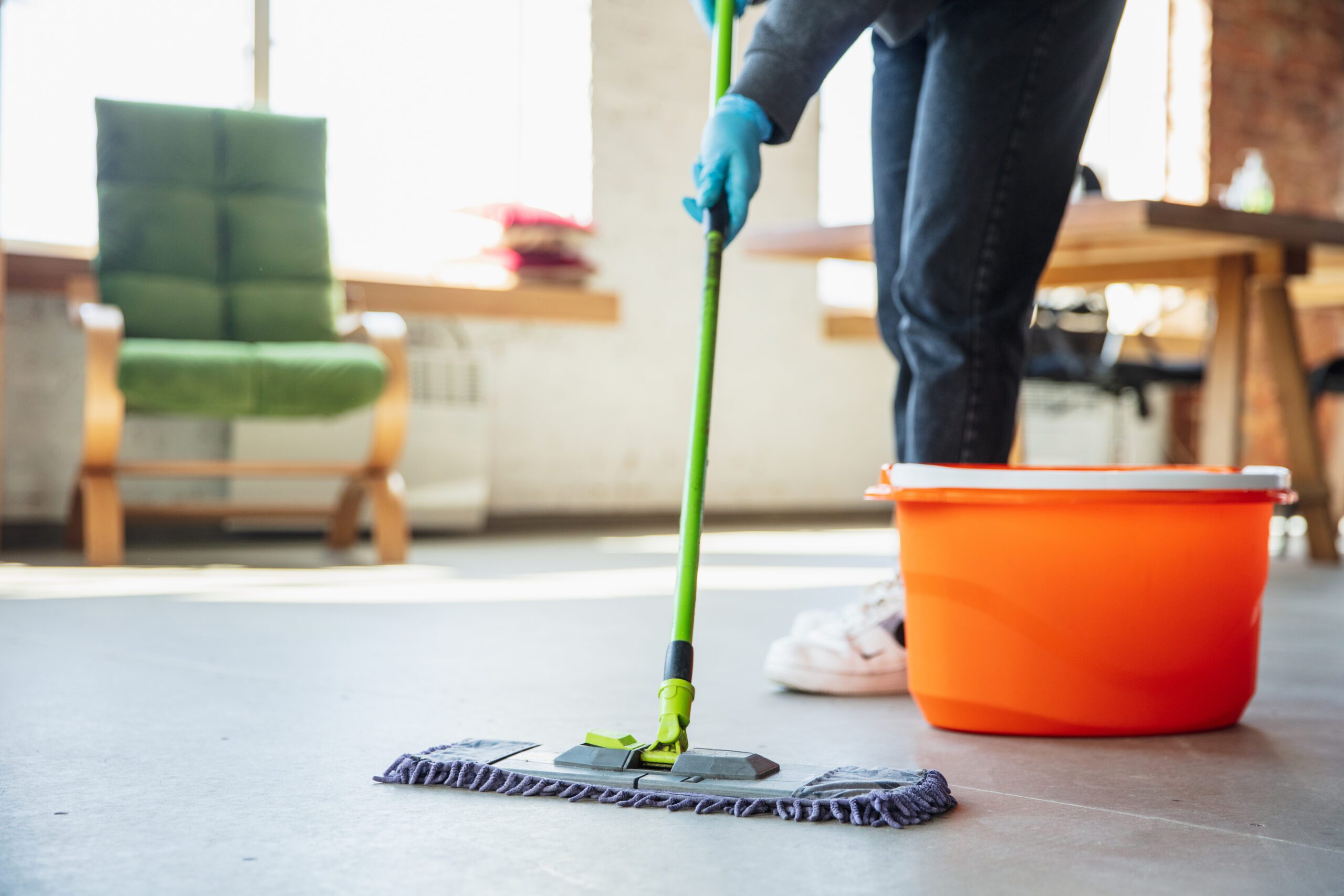Mopping floors is one of the most crucial cleaning tasks in maintaining a spotless and hygienic space. Whether you’re cleaning your home, office, or a commercial establishment, knowing the best techniques and tools to use can make a big difference. In this comprehensive guide, we’ll explore the best methods, tips, and products to help you mop your floors effectively.
At Atlas Janitorial Services, we specialize in commercial cleaning services, ensuring that your floors stay clean and professional. Whether you’re looking for tips on how to mop a floor correctly or need help with floor cleaning solutions, we’ve got you covered.
Why Proper Mopping is Important
Floor cleaning is essential for maintaining a healthy environment. Regular mopping helps remove dirt, spills, allergens, and germs, contributing to a cleaner and safer space.
- Hygiene and Health: Cleaning floors effectively reduces bacteria and viruses, improving overall hygiene.
- Aesthetic Appeal: Well-mopped floors instantly enhance the look of your space.
- Increased Longevity of Floors: Regular mopping prevents grime build-up, which can wear down flooring materials over time.
But to achieve the best results, it’s crucial to know how to mop floors properly.
Tools You’ll Need to Mop Floors Properly
Before we dive into the step-by-step process, let’s take a look at the essential tools required for mopping floors.
1. The Right Mop
Selecting the best mop for your floor type is essential for achieving a thorough clean.
- Traditional String Mop: Great for general cleaning, it’s perfect for large areas.
- Flat Mop: Best for smooth surfaces like tiles and hardwood floors.
- Spin Mop: Ideal for those who need ease of use and flexibility.
- Sponge Mop: Effective for absorbing moisture and cleaning stubborn stains.
2. Mop Bucket with a Wringer
A mop bucket is necessary for holding your cleaning solution and water. Many mop buckets come with built-in wringers, helping you control the amount of water on the mop.
3. Cleaning Solution
To effectively mop floors, using a proper cleaning solution is key. You can either use:
- All-purpose cleaners for everyday cleaning.
- Non-toxic mopping solutions for a more eco-friendly approach.
- Disinfectants for extra sanitizing, especially in high-traffic areas.
Step-by-Step Guide on How to Mop a Floor
Now that you have the right tools, it’s time to get mopping! Follow these simple steps for a spotless floor.
1. Prepare Your Mop and Bucket
Start by filling your mop bucket with warm water and adding your chosen cleaning solution. The water should be clean and not too soapy to avoid leaving residue behind.
- Tip: If you’re using a non-toxic solution, follow the manufacturer’s instructions for the right dilution.
2. Wet the Mop
Dip the mop into the bucket and let it soak up the cleaning solution. If you’re using a sponge mop, squeeze out excess water to avoid puddles.
- Tip: Make sure to avoid soaking your mop too much, as it could cause streaks on your floor.
3. Start Mopping the Floor
Begin in one corner of the room, working your way to the exit to avoid stepping on freshly mopped areas. Mop in a figure-eight or “S” motion to ensure you’re covering every inch of the floor.
- Tip: For stubborn spots, apply a little extra cleaning solution and give it a scrub with a mop brush.
4. Rinse the Mop Regularly
As you mop, rinse the mop in the bucket to remove dirt and grime. Squeeze out excess water before continuing. This will ensure you’re always mopping with a clean mop.
- Tip: Change the water when it gets too dirty, especially if you’re cleaning larger areas.
5. Dry the Floor
Once you’ve mopped the entire floor, allow it to air dry. If you need the floor to dry quickly, use a microfiber cloth to wipe up any excess moisture.
- Tip: Avoid walking on freshly mopped floors until they are fully dry to prevent dirt from being tracked in.
Common Mopping Mistakes to Avoid
While mopping seems straightforward, there are several common mistakes that can hinder your cleaning efforts.
1. Using Too Much Water
Excess water can damage certain types of floors, especially wood or laminate. Always make sure your mop is damp and not soaking wet.
2. Not Rinsing the Mop Often Enough
If you continue mopping with a dirty mop, you’ll just be spreading dirt around. Be sure to rinse the mop frequently to maintain cleanliness.
3. Mopping in the Wrong Direction
Mopping in a circular motion or randomly can leave streaks. Instead, mop in an “S” or figure-eight motion for the best results.
4. Using the Wrong Cleaning Products
Not all floor cleaning products are suitable for every type of floor. Always check the product labels and use the right solution for your specific flooring type.
Best Mopping Solutions for Different Floor Types
Different floor types require different cleaning products. Here are some of the best ways to clean various flooring materials:
1. Hardwood Floors
For hardwood floors, avoid soaking the floor in water. Use a cleaner specifically designed for wood floors and a damp mop to prevent warping.
- Best Solution: Wood floor cleaner or a mixture of water and a small amount of vinegar.
2. Tile Floors
Tiles are generally easy to mop, but grout lines can be tricky. For a deep clean, use a specialized floor cleaner and scrub the grout with a mop brush.
- Best Solution: All-purpose floor cleaner or a mild bleach solution for disinfecting.
3. Vinyl Floors
Vinyl floors are durable, but they can be prone to scratches. Use a mild cleaning solution and a soft mop to avoid damaging the surface.
- Best Solution: Mild detergent mixed with warm water.
4. Laminate Floors
Laminate floors require careful attention to avoid water damage. Use a damp mop and a gentle cleaner to avoid streaks.
- Best Solution: A mixture of water and a few drops of dish soap.
How to Maintain Clean Floors Between Mopping
While regular mopping is essential for deep cleaning, there are ways to keep your floors clean between mopping sessions.
1. Sweep or Vacuum Regularly
Sweeping or vacuuming your floors removes dirt, dust, and debris that can build up and affect the cleanliness of your floors.
2. Use Floor Wipes for Quick Touch-Ups
For quick cleaning, use floor wipes or microfiber cloths. These are especially useful for spot cleaning and removing sticky residue from floors.
3. Keep High-Traffic Areas Clean
Focus on high-traffic areas and make sure to clean up spills immediately to prevent staining and dirt buildup.
What to Use for Mopping Floors: The Best Products
Choosing the right products is essential to ensure a successful mopping session. Here are some of the best items to use for mopping floors:
1. Microfiber Mops
Microfiber mops are one of the best options for cleaning floors. They trap dirt and moisture, and they’re gentle on floors, leaving them streak-free.
2. Squeegee Mops
Squeegee mops are perfect for removing excess water, especially on larger floor surfaces. They are great for floors that need to dry quickly after mopping.
3. Steam Mops
For a deeper clean, steam mops use heat to sanitize floors while cleaning. They’re especially effective for hard-to-clean floors like tile and grout.
FAQs: Everything You Need to Know About Mopping Floors
1. How often should I mop my floors?
It depends on the foot traffic in the area. High-traffic areas like kitchens and hallways should be mopped more frequently—about once a week. For less trafficked areas, once every two weeks may be sufficient.
2. What is the best way to mop floors without leaving streaks?
To avoid streaks, always use a clean mop, rinse it regularly, and avoid soaking it in water. Microfiber mops are also great for preventing streaks.
3. Can I use dish soap to mop the floor?
Yes, you can use a small amount of dish soap mixed with water for mopping. However, make sure to rinse the floor well afterward to avoid soap residue.
4. What is the best mop for cleaning hardwood floors?
For hardwood floors, a microfiber mop is ideal. It’s gentle on the surface and won’t scratch the finish, while still effectively cleaning.
5. Can I mop with a dry mop?
No, a dry mop won’t clean effectively. It’s best used for dusting and removing light dirt. For mopping, the mop should be damp but not soaking wet.
6. How do I dry my floor after mopping?
Allow the floor to air dry, but if you need to speed up the drying process, you can use a dry microfiber cloth to wipe up excess moisture.
7. Is it safe to use a steam mop on laminate floors?
Steam mops should generally be avoided on laminate floors, as the moisture can seep into the seams and damage the material. Use a damp mop instead with a gentle cleaning solution.
Conclusion: How to Mop Floors Effectively
Mopping floors doesn’t have to be a daunting task. By following the right method, using the correct tools, and selecting the best cleaning products, you can achieve sparkling clean floors with minimal effort. Whether you’re looking for tips on how to mop a floor correctly or need help selecting the best mopping system, Atlas Janitorial Services is here to assist with your floor cleaning needs.
For professional floor cleaning services, don’t hesitate to contact us today. We ensure that your floors are always spotless, no matter the environment.

